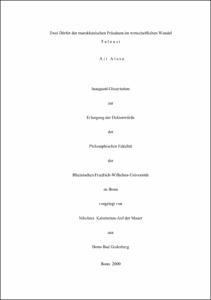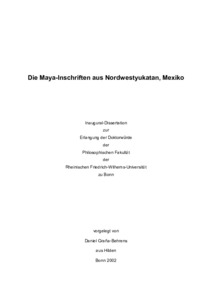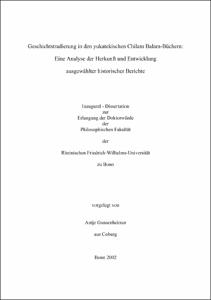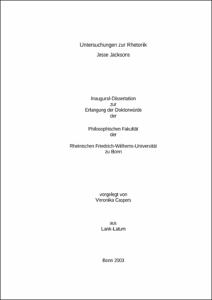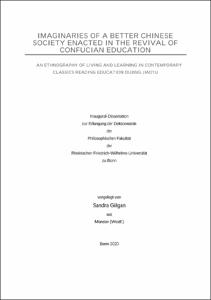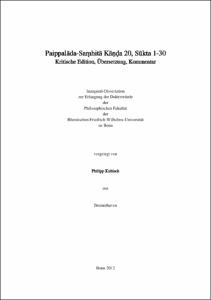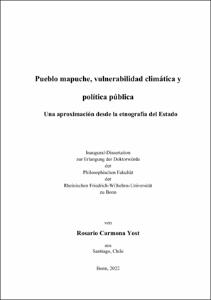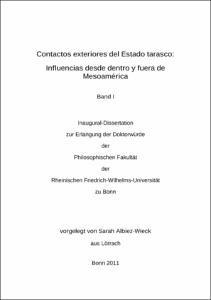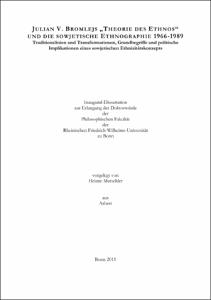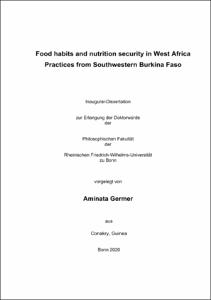E-Dissertationen: Suche
Anzeige der Dokumente 1-10 von 37
Zwei Dörfer der marokkanischen Präsahara im wirtschaftlichen Wandel: Taloust, Ait Aissa
(2000)
Der Vergleich der Wirtschaftsformen zweier Dörfer im Südabhang des Atlas orientiert sich am Wirtschaftsverhalten ihrer Haushalte, ihrer Gleichartig- oder Unterschiedlichkeit. Formale Verfahrensweisen zum wirtschaftlichen ...
Die Maya-Inschriften aus Nordwestyukatan, Mexiko
(2002)
Die Arbeit beschäftigt sich mit der Chronologie der Maya-Inschriften aus Nordwestyukatan, unter Berücksichtigung der regionalen Besonderheiten in der Zeitrechnung und mit den sich für Klassik und Postklassik (300 — 1539 ...
Geschichtstradierung in den yukatekischen Chilam Balam-Büchern: Eine Analyse der Herkunft und Entwicklung ausgewählter historischer Berichte
(2002)
Die vorliegende quellenkritische Untersuchung folgt der Zielsetzung, den Ursprung und die Bedeutung der yukatekischen Chilam Balam-Bücher in der Zeit ihrer Verwendung zu analysieren. Diese Aufgabenstellung wurde exemplarisch ...
Untersuchungen zur Rhetorik Jesse Jacksons
(2003)
Jesse Jackson hat seit den 60er Jahren des 20. Jahrhunderts eine wichtige Rolle im öffentlichen Leben der USA eingenommen. Dies gilt besonders für die 80er Jahre, in denen er sich zweimal um die Nominierung als ...
Imaginaries of a better Chinese society enacted in the revival of Confucian education: An ethnography of living and learning in contemporary classics reading education dujing jiaoyu
(2020-08-11)
Studying Confucian classics is commonly known as core activity in Chinese imperial education – at least for young men who sought a career as government official. When this learning technique reappeared in classrooms of ...
Paippalāda-Saṃhitā Kāṇḍa 20, Sūkta 1-30: Kritische Edition, Übersetzung, Kommentar
(2012-11-23)
Die Paippalada-Samhita, eine Sammlung vedischer Zaubersprüche, gilt als der zweitälteste indische Text nach dem Rgveda. Von ihren insgesamt 20 Büchern sind bis jetzt die ersten sechzehn (ca. zwei Drittel) mehr oder weniger ...
Pueblo mapuche, vulnerabilidad climática y política pública
(2022-01-25)
A través de una etnografía del Estado, esta investigación tiene por objetivo analizar el rol de la política climática chilena ante la vulnerabilidad climática del pueblo mapuche, a través del caso de la comuna de Lonquimay. ...
Contactos exteriores del Estado tarasco: Influencias desde dentro y fuera de Mesoamérica
(2011-09-15)
El presente trabajo investiga las relaciones exteriores del Estado tarasco en el occidente de México en el postclásico tardío. Por medio del estudio de los contactos exteriores, la naturaleza del Estado tarasco mismo puede ...
Julian V. Bromlejs „Theorie des Ethnos“ und die sowjetische Ethnographie 1966-1989: Traditionslinien und Transformationen, Grundbegriffe und politische Implikationen eines sowjetischen Ethnizitätskonzepts
(2011-04-08)
Seit der Implosion der Sowjetunion hat das Forschungsinteresse an der imperialen Dimension der sowjetischen Geschichte erheblich zugenommen. Einige Wissenschaftler sprechen in diesem Zusammenhang von einem „ethnic“ ...
Food habits and nutrition security in West Africa: Practices from Southwestern Burkina Faso
(2020-10-30)
Background: The southwestern part of Burkina Faso (BF) like the whole country faces severe vulnerability to food and nutrition insecurity, which is characterised by a cyclical up and down, and particularly by a high rate ...


